I want to change the height of my tableview from another viewcontroller based on the sum of its cells' heights, as they are dynamic. Is it at all possible? Thanks
Add-on:
What I basically have is a UserProfileViewController that has a containerview on half of the screen. There I add different other viewcontrollers:


In the case of the wall button this is how I add the viewcontroller and it's subsequent tableview:
- (IBAction)wallButtonPressed:(id)sender
{
//Check if there is an instance of the viewcontroller we want to display. If not make one and set it's tableview frame to the container's view bounds
if(!_userWallViewController) {
self.userWallViewController = [[WallViewController alloc] init];
// self.userWallViewController.activityFeedTableView.frame = self.containerView.bounds;
}
[self.userWallViewController.containerView addSubview:self.userWallViewController.activityFeedTableView];
//If the currentviewcontroller adn it's view are already added to the hierarchy remove them
[self.currentViewController.view removeFromSuperview];
[self.currentViewController removeFromParentViewController];
//Add the desired viewcontroller to the currentviewcontroller
self.currentViewController = self.userWallViewController;
//Pass the data needed for the desired viewcontroller to it's instances
self.userWallViewController.searchURLString = [NSString stringWithFormat:@"event/user/%@/", self.userID];
self.userWallViewController.sendCommentURLString = [NSString stringWithFormat:@"event/message/%@", self.userID];
[self.userWallViewController.activityFeedTableView reloadData];
self.userWallViewController.totalCellHeight = ^(float totalCellHeight){
self.scrollView.contentSize = CGSizeMake(320.0, totalCellHeight);
CGRect newFrame = self.userWallViewController.containerView.frame;
newFrame.size.height = totalCellHeight + 33.0;
self.userWallViewController.containerView.frame = newFrame;
self.userWallViewController.activityFeedTableView.frame = self.containerView.bounds;
};
//Add this containerview to the desired viewcontroller's containerView
self.userWallViewController.containerView = self.containerView;
//Add the needed viewcontroller and view to the parent viewcontroller and the containerview
[self addChildViewController:self.userWallViewController];
[self.containerView addSubview:self.userWallViewController.view];
//CLEAN UP THE CONTAINER VIEW BY REMOVING THE PREVIOUS ADDED TABLE VIEWS
[self.userFansViewController.userSimpleTableView removeFromSuperview];
[self.fanOfViewController.userSimpleTableView removeFromSuperview];
[self.userPublishedMovellaListViewController.gridView removeFromSuperview];
[self.userPublishedMovellaListViewController removeFromParentViewController];
self.userPublishedMovellaListViewController = nil;
}
and in that viewcontroller this is where I initialize my tableview:
-(UITableView *)activityFeedTableView
{
if (!_activityFeedTableView) {
_activityFeedTableView = [[UITableView alloc] initWithFrame:CGRectMake(0.0, 0.0, 320.0, 850.0) style:UITableViewStylePlain];
}
return _activityFeedTableView;
}
I am calculating he total sum of the cell's height, the problem is that the cell's height method is called way after the getter of te tableview is called. So I would need some sort of way to know when the cells' height method is done for all cells and then I can resize my tableview. Thanks





